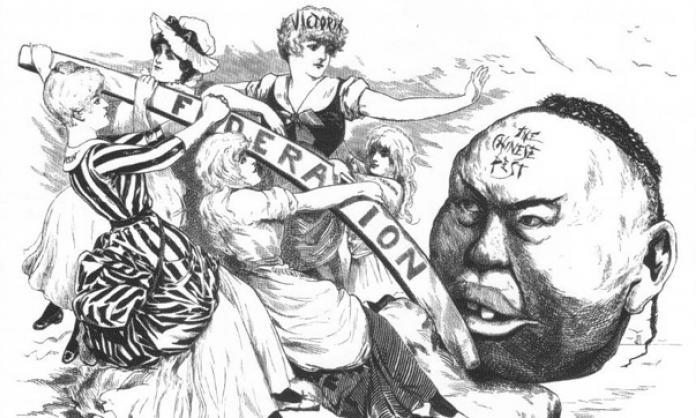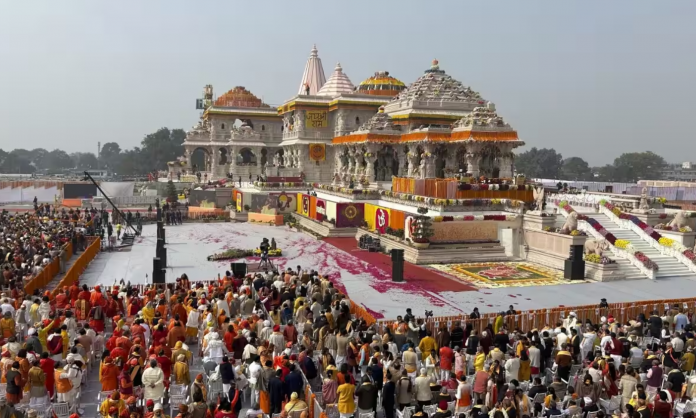Racism, like all oppression, survives so long as it facilitates exploitation and domination. It is not just a set of ideas that form for no reason and spread in defiance of all logic; it is rooted in material conditions. Organised and systemic racism first emerged with the trans-Atlantic slave trade and has since been used to justify colonialism and genocide, to cohere people behind imperialist wars, create scapegoats for capitalism’s myriad failings and allow capitalist ruling classes to maximise their exploitation of labour power by dividing workers into hierarchical and hostile categories.
Peter Alexander, writing in 1980s Britain, laid out one of the best brief explanations of racism, identifying not only its historical roots in capitalism, but its evolution with capitalism: “Racism itself took shape in the course of the development of capitalism ... [and] has assumed three successive forms, the racism of slavery, the racism of empire, and anti-immigrant racism”.
In the 19th century Australian colonial context, pervasive racism was not an expression of innate xenophobia, but an expression of agendas being pursued by the colonial ruling class. In his 2006 doctoral thesis, Phil Griffiths articulated a clear analysis of what this means. He focuses on the period 1876-88, when the pre-Federation Australian ruling class was taking significant steps toward what would soon become enshrined as the White Australia policy. Griffiths identified three agendas the ruling class was pursuing.
The first, and perhaps primary, concern was a strategic one. The colonial ruling class was driven by a relentless fear of China’s capacity to threaten British control, and then more loosely “white” or “Australian” control, over this continent that Britain itself was still stealing from its Indigenous owners. The white population was concentrated in isolated pockets, mostly along the south-east coast of this enormous continent, and the ruling class lived in terror that one day a rival colonial power would take the north.
Despite having been occupied and carved up by European powers, China through the 19th century remained the biggest and most militarily advanced power in the Asia Pacific region (at least until the rise of Japan in the 1890s). Australia’s rulers also assumed that even if China’s seizure of the continent couldn’t be accomplished by military force, it could easily be achieved by the slow implantation of enough Chinese people to form a future fifth column.
Articulations of this fear can be seen across centuries in the constant invocation of a “Chinese invasion”. In the 19th century it’s seen in countless newspaper cartoons, but perhaps most brazenly in the comments of politicians. For example, in 1879 when New South Wales premier Henry Parkes introduced a new round of Chinese exclusion laws, he justified them with reference to the Chinese emperor’s alleged plot to colonise Australia. Parkes even ordered customs officials to interrogate all Chinese people they encountered, to gather intel on this mythical invasion plan.
We see the same racist trope expressed today in Clive Hamilton’s fearmongering book Silent Invasion, with its distrust of Chinese students, cleaners and even of those granted refuge here after the Tiananmen Square massacre – who he claims “would become some of the most effective agents of influence in Beijing’s campaign to transform Australia into a tribute state”.
If the ruling class’ first agenda was strategic, the second agenda Griffiths identified was “the minimisation of indentured ‘coloured labour’, so that a modern, industrial economy could be built”. Sections of the ruling class, particularly in Queensland’s pastoral sector, benefited from exploiting indentured workers and “black bird” slave labour on the plantations. This put them at conflict with the rest of the Australian ruling class, which wanted to exclude “coloured” labour:
“A century of anti-slavery agitation meant that such a model represented an economic, social and political threat to those who wanted a society based on free labour capitalism and parliamentary rule. It would also have consigned such societies to economic and social backwardness, producing simple commodities instead of advanced manufactures and other sophisticated products.”
Rather than address this by abolishing slavery and indenture, and giving “foreign” workers equal rights with those already living here, Australia bared its racist teeth by attempting to ban the workers who’d been the victims of these practices. The government even left intact the legal infrastructure for indenture and slavery as a practice despite its supposed abolition in 1901. Indentured Chinese labourers were, for example, common in Melbourne’s hospitality sector in the 1950s, while indentured Asian labour persisted in Australia’s pearl-shelling industry until well into the 1970s. A moment’s reflection on Australia’s 21st century migrant work visas brings to light glaring continuities in the way Australian capitalism exploits migrant workers and bonds them to particular employers.
Griffiths identified the third ruling class agenda behind White Australia as “the construction of an ‘homogeneous’ population, both demographically and culturally”. This refers not to ruling class fears of a potential fifth column, but to the aim of maximising bonds of ideological and cultural cohesion to better discipline the working class:
“Chinese people were the major group regarded as unable to be assimilated into Australia’s British culture. Chinese people were not Christian and could not, it was feared, be disciplined using the ideological methods used on people of British origin. A large Chinese population would threaten existing political structures and techniques for social control.
“Chinese camps were notorious for providing a space for ‘larrikins’ and prostitutes. Chinese people were disciplined by their own secret societies, which raised the prospect of alternative centres of power. To admit large numbers of Chinese to British-Australian nationality would undermine the effect of existing nationalist and racist ideologies on the white population and necessitate the construction of new nationalist and class collaborationist ideologies.”
In other words, a key aim was to forge a national identity that would bind workers ideologically with their exploiters and the state. Other writers do place anti-Chinese racism in the context of fostering a national identity, but tend to trivialise the top-down nature of the process. Instead, they depict an innate hostility to difference that exists independently of the ruling class’ material and ideological agendas.
John Fitzgerald for example, in his 2007 book Big white lie: Chinese Australians in white Australia, rightly dismisses the “clash of cultures” narrative, but explicitly replaces it with a “popular racism”, pointing out that it was Chinese dress and customs, that “marked them out for comment and caricature”. But this misses the point. The creation of an Australian identity hinged on the ruling class’ conscious promotion of racism.
There are two aspects of this. First, it was about consolidating British control of the physical space through excluding Chinese people whose loyalty was suspected to be with a rival state and whose culture allegedly made them impossible to discipline. Second, it was about undermining class consciousness and class identity. Again, most historians get this second aspect wrong, arguing that the White Australia policy represented a gain for the white working class despite it uniting them with their own exploiters.
Perhaps the best illustration of this dynamic comes from the very man who drafted the Immigration Restriction Act 1901, Australia’s first attorney general, Alfred Deakin. In his parliamentary speech supporting the Bill, his references to “they” and “us” should be read as meaning Chinese people and white people respectively, while “sectional differences” obviously mean class conflict:
“It is only necessary to say that they do not and cannot blend with us; that we do not, cannot, and ought not to blend with them. This was the motive power which swayed tens of thousands who take little interest in contemporary politics – this was the note that touched particularly the Australian born, who felt themselves endowed with a heritage not only of political freedom, but of an ample area within which the race might expand, and an obligation consequent upon such an endowment – the obligation to pass on to their children and the generations after them that territory undiminished and uninvaded. A coloured occupation would make a practical diminution of its extent of the most serious kind. It was this aspiration which nerved them to undertake the great labour of conquering the sectional differences that divided us.”
Two years later, during his successful campaign to become prime minister, Deakin made an even more explicit connection between the White Australia policy and the aim of smashing union power: “You probably believe that a white Australia is secure. I hope it is, but it won’t be secure unless a vigilant watch is kept upon proposals to tamper with it ... The next necessity for a white Australia will be to pass the Arbitration Bill, to prevent strikes, and lockouts”.
Deakin understood that class struggle undermined class collaboration and national identity. He defined “strikes and lockouts” as a threat to White Australia. While compulsory arbitration (which forced unions off the picket lines and into the courts) is often lauded as a victory for the union movement, it actually aimed to severely reduce our capacity for action. When Deakin identified this as a “necessity for a white Australia”, he illustrated just how class conscious the white Australian ruling class was.
The ruling class agendas that underpinned White Australia weren’t the only path Australian capitalism could have taken. But for the ruling class in general, notwithstanding a few sectional disagreements, there was a certain horrible logic to Chinese exclusion. This is why the White Australia policy was proudly supported by every political party that ran seriously for parliament. It’s important, and accurate, to point out that the ALP was the party of White Australia. But so too were the Free Trade Party, the Protectionist Party and later the National Party, the Country Party, the United Australia Party and the Liberal Party. Every government and every opposition between 1901 and 1965 declared support for White Australia, and most of those governments were not of the ALP. This is not to excuse the ALP or to deny its role in propagating racism, but to illustrate the unassailable centrality of the White Australia policy to Australian capitalism. The policy was non-negotiable.
----------
This is an edited extract of “Revisiting the roots of anti-Chinese racism”, published in Marxist Left Review No.18, winter 2019.











